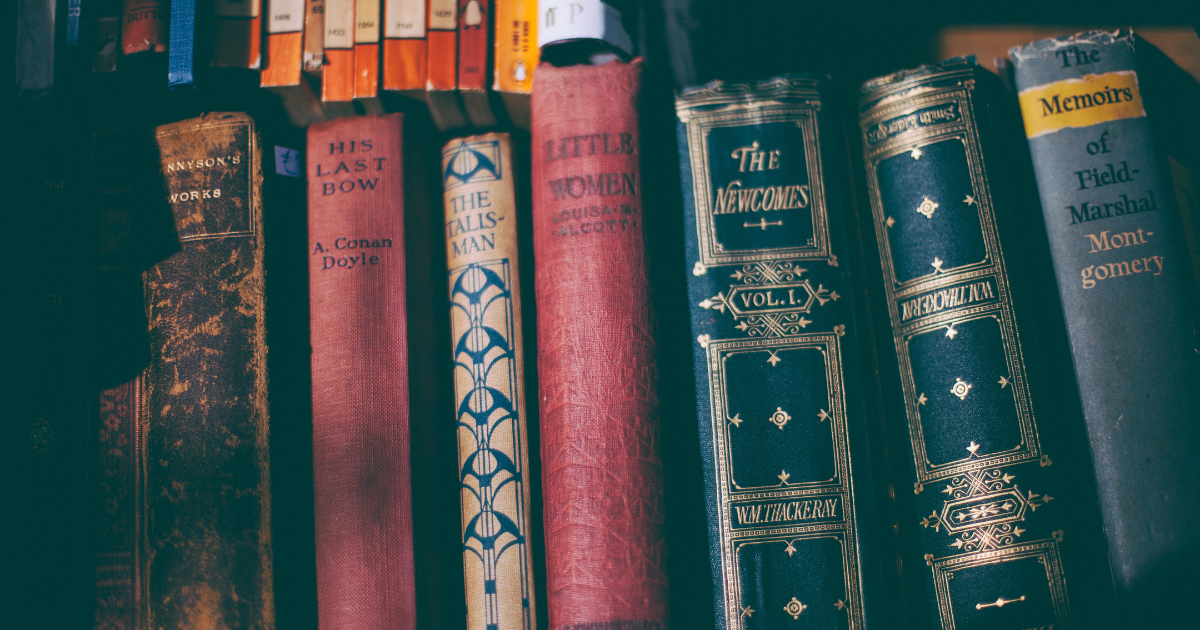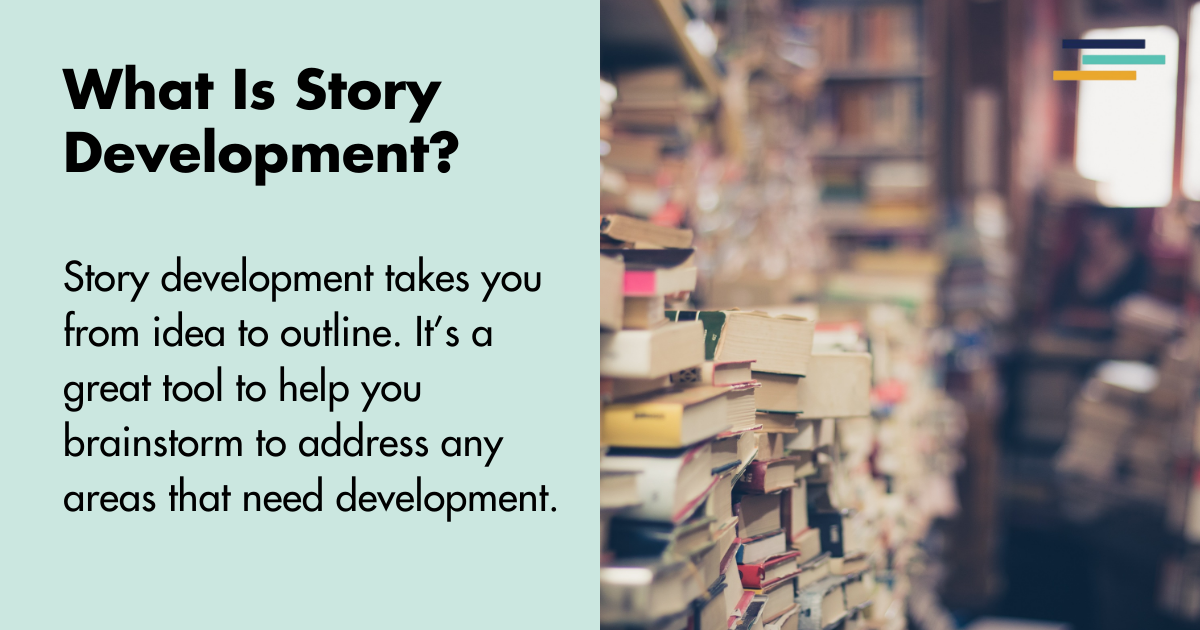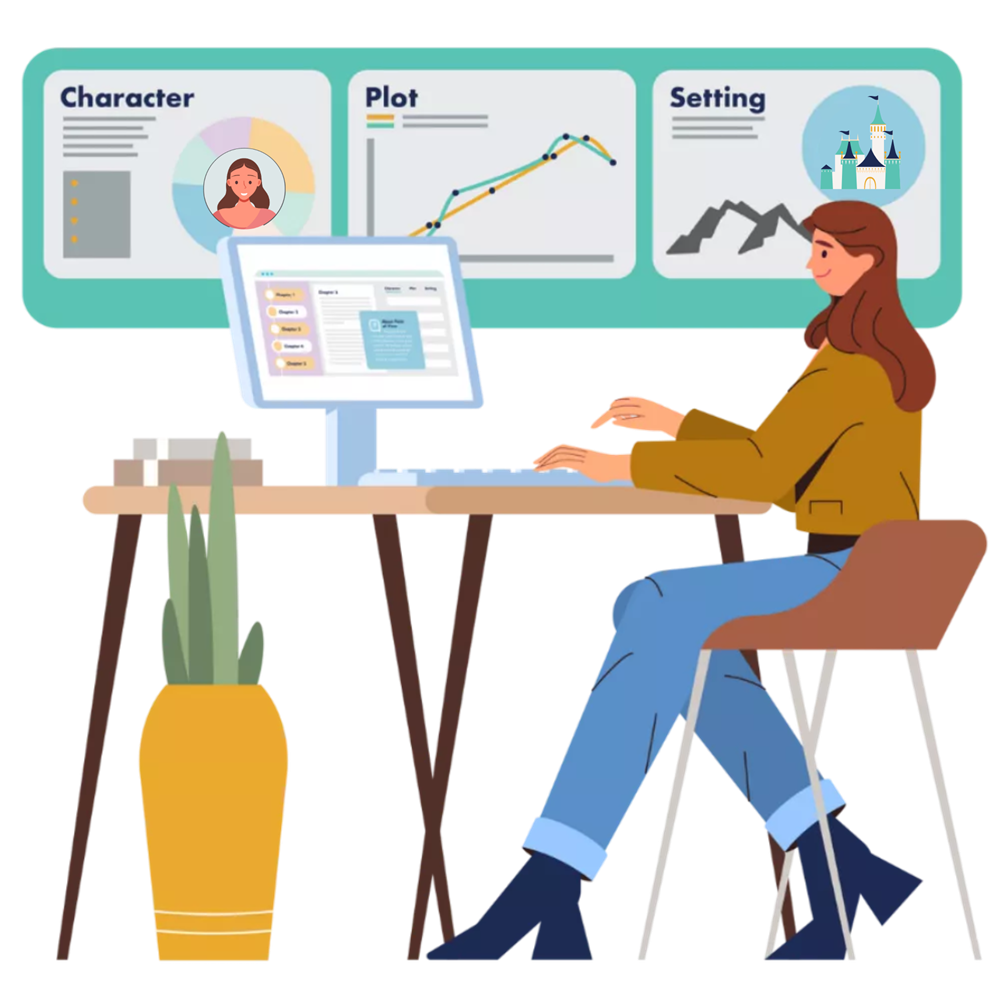
You have an idea. It inspires you, but how do you make it a full story? How do you know the idea has legs? You want to create a structurally strong story that readers will love. How will you know you’ve succeeded? How do you get there? There are ways to know and to honor your creativity and story.
Let’s start with what you have. Do you have an idea and the desire to share it? Have characters been sharing bits of dialogue and their story? Have you got a scene you feel inspired by?
Whatever part of a story you are starting with, story development will help flesh it into an outline you can use to guide your writing and inspire your creativity.
You may not see yourself as a planner, maybe you’ve always written then gone to editing. But you are here because you have an idea that you want to develop. If you jump in and start writing, we’ve got you.
These story development steps and ideas are here for you if your writing muse goes quiet or you are feeling a little blocked.
What is Story Development?
Story development takes you from idea to outline and helps you see if you have a story worth telling. It is a great tool to help you brainstorm to address any areas that could use more development to make this a story you will love writing.
Story development is creative, can take you in different directions, and uses ideas old and new to create something beautiful and unique.
As you read through the next steps, you will find that there may be some you can skip for this story because you’ve already completed them. Keep the list handy because there are other moments in story development you may want to go back and revisit.
How to Develop Your Story
Jot Down Story Ideas
What do you know already from your idea? Do you have a setting? Characters? Action that will be part of your plot?
Whatever you already know, capture it. Get your brain on the page (or screen). Don’t worry about order or logic, just capture all you can. The following questions may help get you started.
- Is there anything you already know about the setting? Are any of your senses engaged in the idea? Do you see something? Hear something?
- Is there anything you already know about the characters? Do you have names, occupations, desires, or wounds? Are there enemies, antagonists, or lovers?
- Is there anything you already know about the plot? Do you know how the story ends? How it begins? What happens?
Start the Development of the Story
Using what you notice in these first notes, build on what you have. Consider some of the following questions to help you add to your first ideas. Remember, at this point, everything is acceptable. This is still a brainstorming stage where you are letting your creative juices flow.
Look at the setting ideas:
- What obstacles or challenges might exist there?
- Who would you find there?
Look at the character ideas:
- What obstacles or challenges might this character face? Why?
- What do they want? Why?
- Who might stop them? Help them? Love them? Hate them?
- Where would they be most at home? Where would they be most challenged? Why might they be there?
Look at the plot ideas:
- Who would be part of this action? What unexpected character might find themselves doing this?
- Where is the most likely place this would take place? Where is the most unlikely place this might take place? How does the setting choice change or challenge the action?
Do these questions trigger more? Follow those ideas or chase new ones. Get everything down on a page. Keep it fun and let the judge take the day off.
Develop a Story Skeleton Blurb
So, what is a skeleton blurb? For our story development, this will be the line that keeps your story on track. With this skeleton blurb, you’ll build your structure and outline with a clear idea of what belongs in this story (and which of those cool ideas you’ll be saving for another story).
The Fictionary Skeleton Blurb was originally used to help editors, including writers who were self-editing, evaluate what scenes and elements belong in the story.
But, the Skeleton Blurb is an awesome tool for story development too!
Your protagonist pursues the story goal. The stakes are what happens if the protagonist fails. This single sentence will give you confidence your story will be the one you want to write.
Don’t worry, we aren’t carving it into stone, just getting the idea down on paper for now. As you develop your story, your skeleton blurb will be a touchstone and a guide that you can choose to change as you get to know more of what you want to write.
The skeleton blurb looks like this: Protagonist must (story goal) otherwise (story stakes).
You may only know one of these elements for sure. Maybe you know the story goal. What character from your brainstorming has the most invested in getting the goal? Who has the most to lose? That could be your protagonist!
Do you know your protagonist? Look over all those ideas and decide what goal will have the most impact for them and the biggest consequences if they don’t achieve it.
Do you know your story stakes? What is the worst thing that can happen? With that in mind, which character can you see in that dark ending? What did they not achieve that left them here?
Do you know a scene? Which one? If you can imagine the climax scene, you’ve got all the elements for your skeleton blurb! Who is the character? What are they trying to get? What happens if they don’t get the goal?
Using the questions above and trusting your gut, create the blurb that excites you to write. Remember, protagonist, story goal, story stakes.
The 5 Step Story Development Process
The next step will be to use your skeleton blurb to outline five main events in five key scenes. With this blurb and the brainstorm notes of your ideas, you will build your outline.

What is a Story Outline in Storyline Development?
A story outline is a plan that helps guide you as you write your story. The level of detail will be up to you.
For some writers, a short description of main events for key scenes will be enough to keep them writing. For others, taking the time to create a detailed outline will make the writing time shorter.
I know one writer who spends months working on their outline and finds the book is written in half that time. For another, the outline is only to check at main points, and the writing is more exploratory with the outline giving a sense of confidence that the main scenes are there in the first draft.
Yet another begins with a loose outline with few details but returns to it whenever they hit a block or feel a little stuck. Then, going back into the outline, this writer adds detail or depth to an area until the spark is struck. The outline is there as a support to keep writing.
You may see yourself there or be somewhere in between or somewhere else altogether. The great news is that a story outline can be developed to the level that inspires your writing.
How to Outline Your Story
Let’s keep this simple. We are going to use the Fictionary Story Arc scenes to start the outline.
From this first level of outline, we can grow to a much more complex outline. We even have a template that you can use.
What is a Story Arc?
A beautiful visualisation of the backbone of your story is the Story Arc. This shows that you are linked in purpose and plan with the great stories that hold our attention. From Beowulf to modern bestsellers, there is a frame for stories that satisfies our readers.
The Story Arc uses five key scenes and the resolution to examine the structural strength of a story. We are going to use these five scenes to start our outlines. This section will review the role each Story Arc scene plays. The next section will look at some question and ideas you can use to create your outline.
The five Story Arc scenes are: the inciting incident, plot point 1, the middle plot point, plot point 2, and the climax.
The five Story Arc scenes play important roles in creating a strong story structure.
Inciting Incident
Here, the protagonist meets the story goal. In this scene, the protagonist’s world is turned upside down. While the protagonist might not want to acknowledge the shift, the reader can see that this is the moment the story starts.
Filled with questions that won’t be answered until the climax, the reader starts on the journey away from the protagonist’s ordinary world with the protagonist as the unknowing guide.
Plot Point 1
The protagonist, often reluctantly, accepts the story goal. There is no turning back but that doesn’t mean the protagonist has to like the trajectory of the path ahead. Often acting more in reaction than with full planning, the protagonist begins attempting to get the story goal.
Middle Plot Point
Up to the middle plot point, the protagonist has been reacting, trying to reach the goal without full effort or commitment.
The middle plot point scene is a moment of change. This is a big shift for the protagonist, from reacting and hoping to reach the goal to actively pursuing the goal. This shift is seen by the reader as the protagonist becomes more active but also as the character understands what the goal means and why they want it.
The reader has seen how the protagonist’s focus has changed. With a vision of the goal and a clearer sense of what is at stake, the protagonist pushes against the obstacles in the way and plans how to attain the goal with the reader rooting for them all the way!
Plot Point 2
In plot point two, the protagonist and reader know all is lost. While there have been wins and losses along the way, in this moment, the protagonist feels the impossibility of the task. The goal is just too far out of reach.
In this lowest moment, the protagonist gains an insight or information that will be essential in the climax.
Climax
The climax scene is the moment the reader has been waiting for! The reader discovers whether the protagonist is successful in attaining the story goal. With high tension and emotion for the protagonist and the reader, the climax resolves the central conflict. This is the pay-off.
How Can the Story Arc Scenes Help Story Development and Your Outline?
For each Story Arc scene, write a main event. That’s it! But let’s do it in an order that will help your creativity and keep the structure strong.
A main event is an action or decision. What happens? Remember, each Story Arc scene needs a main event that relates to the Story Goal in a specific way. Let’s get started with Plot Point 1.
Plot Point 1
This is the moment that the protagonist accepts the story goal. Using your Skeleton Blurb, write this out at the most basic level. Protagonist’s name accepts Story Goal. Look back at your brainstorming notes or just let your imagination fly. Write a quick sentence or more.
Inciting Incident
With your Plot Point 1 main event, and think about the life of the protagonist before the story goal came into their world. What in their world was shaken up when the story goal became evident (if not to them yet, the reader will know).
Write the main event where the protagonist meets the story goal. If you are inspired, you might write even more.
Plot Point 2
Let’s add another idea into this outline, mirroring. A mirror reflects something but with differences. As a help to our outline, think about how this scene can reflect elements of Plot Point 1.
Here, the protagonist feels the Story Goal is out of reach. In Plot Point 1, the protagonist accepted the Story Goal with no real understanding of what might be required to reach it. In Plot Point 2, the protagonist understands what change or knowledge is required and it seems too much.
So, what main event could this be? Is anything sparked from a quick look at the event in Plot Point 1?
Climax
This is fun! Is the protagonist successful? Is the Story Goal achieved? Write a quick description of the event.
Now, look at the Inciting Incident event. Is there something that could be mirrored? Does the idea of a mirror trigger ideas? Follow the sparks!
Middle
So, there is no mirror scene that can help with the Middle scene but you already have everything you need! Remember, in the Middle Story Arc scene, the protagonist shifts into a more active pursuit of the Story Goal. Why? What makes this so important? What causes this big shift?
What event can propel the protagonist from acceptance to desire for the Story Goal? What might they learn or understand about the Story Stakes that would make the protagonist become proactive?
With these five events, you have the basic outline of your story. From here, you can build each section of your story.
Story Outline Template
A Story Outline Template gives you potential scenes to include in your story.
Beginning with the Story Arc scenes, you can see how this outline can be built. What is the lead up to the Story Arc scene? What is the reaction to the Story Arc scene?
Between the Inciting Incident and Plot Point 1, what scenes will show the protagonist resisting the Story Goal?
After Plot Point 1, how will the protagonist attempt to attain the goal? Remember, the protagonist still thinks this will be easy.
What about after the Middle Story Arc scene? What scenes will show the protagonist facing obstacles to reaching the Story Goal?
After Plot Point 2, what scene will show the protagonist understanding the Story Goal?
After the Climax, how will all the story threads be pulled together in the resolution?
A full Story Outline Template is available in the Fictionary App, and the process is explained in detail in Secrets to Outlining a Novel by Kristina Stanley and L. Cooke.
Developing a Story Conclusion
You have taken your idea and developed an outline. With the barebones or with great detail, you have the Story Arc scenes confirming you have story structure that follows your Skeleton Blurb. You are telling the story you want to tell.
Now, write the book. You can come back to your outline, and you can develop aspects of your outline to help you keep writing. After all, your idea inspired you and, with this story development process, you have an outline that has structure and creativity. Your draft manuscript is the next step. You’ve got this!


